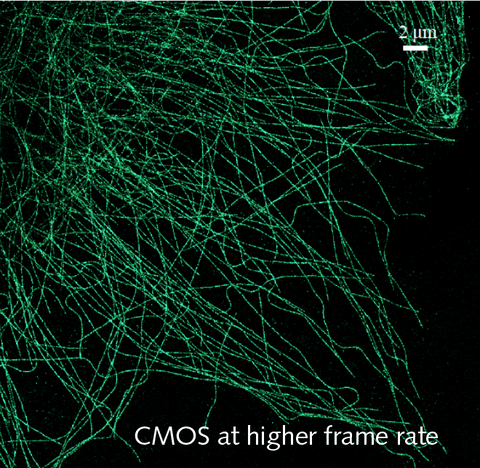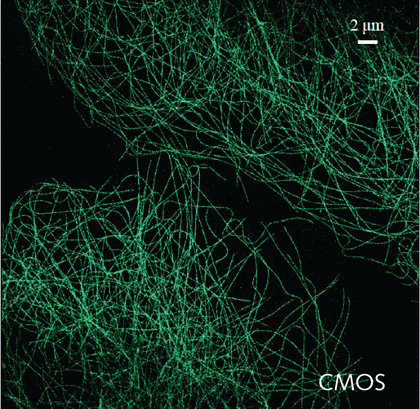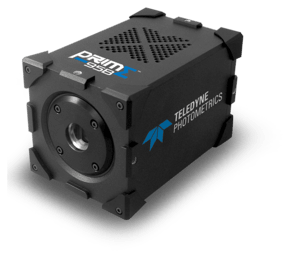Super-Resolution Microscopy at University of California, Berkeley
Prof. Ke Xu, Principal Investigator, Professor of Chemistry
University of California Berkeley, College of Chemistry
Background
The Ke Xu Group at the University of California Berkeley, College of Chemistry is an interdisciplinary lab that combines biophysics, physical chemistry and cell biology. Their goal is to understand how orders emerge in biological systems at the nano-meter scale from the interaction between biomolecules. They achieve this goal experimentally through the development and synergistic application of innovative quantitative methods such as super-resolution fluorescence microscopy.
Ke Xu, principal investigator and assistant professor of chemistry, successfully opened his lab in 2013 and today, leads a team that includes post-doctoral researchers and graduate students. The team recognizes and respects how living systems achieve versatile structural organizations at the nanoscale. Their dedication to gaining a greater understanding of this phenomenon has led to their ability to consistently achieve publication of their research findings.

Prime 95B Scientific CMOS Camera Test
β-tubulin-AF647 160 Hz 50k frames

Prime 95B Scientific CMOS vs EMCCD Camera Test
β-tubulin-AF647 110 Hz 50k frames
Challenge
Previously, EMCCD technology was the primary imaging solution in the Ke Xu Group. However, STORM experiments presented increasing demands on the existing imaging setup. The team decided to look at other technologies, specifically sCMOS solutions due to new advancements in CMOS sensors and more advanced capabilities becoming available.
Having reviewed available products, the team found the Prime 95B Scientific CMOS camera from Photometrics. The company was touting the first and only 95 percent quantum efficiency camera, which piqued their interest. Having the opportunity to fully test the camera, they discovered it offered comparable, if not better, results when compared to their existing EMCCD.
[Prime 95B Scientific CMOS camera] allows us to conduct our STORM experiments with higher frame rates… 95 percent quantum efficiency allows for super-resolution imaging that’s not achievable with conventional sCMOS cameras.
Ke Xu
Solution
When comparing to the EMCCD camera that was used previously, the Prime 95B Scientific CMOS (sCMOS) camera provides many more benefits; faster imaging, comparable spatial resolution and a larger field of view. "The Prime 95B Scientific CMOS camera allows us to conduct our STORM experiments with higher frame rates and a larger field of view than with EMCCD technology,"" Xu shares. "Plus, the 95 percent quantum efficiency allows for super-resolution imaging that's not achievable with conventional sCMOS cameras,"" he adds.

Learn More About The Prime 95B
Download This Customer Story